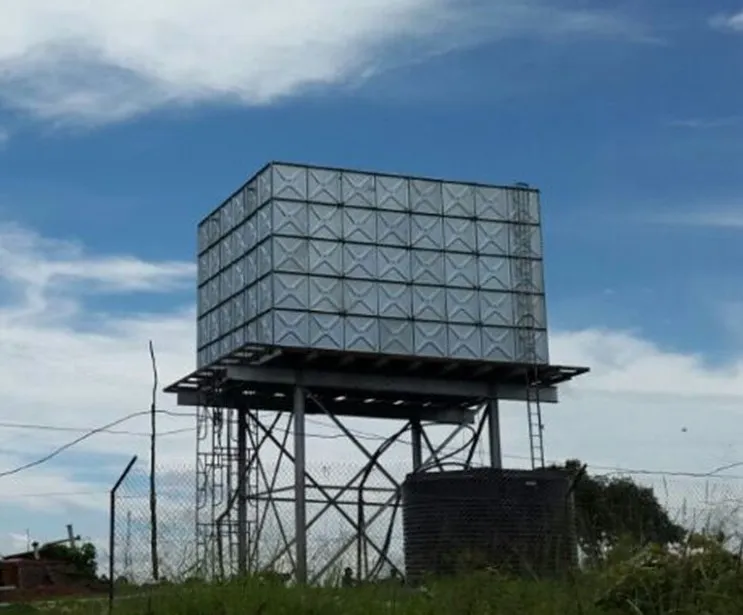loading...
- No. 9, Xingyuan South Street, Dongwaihuan Road, Zaoqiang County, Hengshui, Hebei, China
- admin@zjcomposites.com
- +86 15097380338
- Welcome to visit our website!
Cost Analysis of Fiber Reinforced Polymer Grating Solutions for Your Project
Understanding the Cost of FRP Grating Factors, Benefits, and Applications
FRP (Fiberglass Reinforced Plastic) grating has become a popular alternative to traditional materials like steel and wood. Its durability, lightweight nature, and corrosion resistance make it an ideal choice for various applications. However, understanding the cost of FRP grating is crucial for stakeholders considering this material for their projects. This article will explore the factors influencing the cost of FRP grating, its benefits, and potential applications.
Cost Factors Influencing FRP Grating
1. Material Composition The primary components of FRP grating include fiberglass, resins, and various additives. The type and quality of fiberglass and resins significantly affect the cost. High-performance resins designed for extreme conditions may increase the initial price but add long-term value through enhanced durability.
2. Manufacturing Process The method used to manufacture the grating plays a significant role in its cost. There are different production techniques, such as pultrusion or hand layup, each with different implications for material usage and labor costs. Pultruded grating, while often more expensive upfront due to its automated production process, typically offers improved consistency and strength.
3. Size and Design FRP grating comes in various sizes, thicknesses, and designs. Customization, such as specific dimensions or surface treatments like anti-slip options, will contribute to increased costs. Standard sizes may be more readily available at lower prices.
4. Quantity Like most products, purchasing FRP grating in bulk usually results in lower per-unit costs. Larger projects can leverage economies of scale to minimize expenditure, while smaller projects may face higher costs relative to their requirements.
5. Additional Features Some applications require additional features such as UV protection, fire resistance, or additional coatings to enhance performance. These added functionalities will increase the overall cost of the system.
6. Shipping and Handling The logistics of transporting FRP grating can also influence costs. Due to its lightweight nature, shipping costs may be lower than for heavier materials; however, factors like distance, shipping method, and packaging requirements must be factored into the overall price.
7. Installation Costs While FRP grating is generally easier to handle and install compared to traditional materials, installation costs can still vary based on local labor rates and the complexity of the project. Ensuring that proper installation techniques are followed is crucial for maximizing the lifespan of the grating.
Benefits of FRP Grating
frp grating cost

Investing in FRP grating can lead to substantial long-term savings and benefits
- Corrosion Resistance FRP grating is resistant to chemicals and corrosive environments, making it especially useful in industries such as wastewater treatment, petrochemical, and marine applications. This resistance prolongs the lifespan of the material, reducing maintenance and replacement costs.
- Lightweight Compared to steel or concrete, FRP is much lighter, which can reduce transportation and handling expenses. Its lightweight nature also allows easier installation, leading to potential savings on labor costs.
- Safety Features Many FRP grating designs come with slip-resistant surfaces, enhancing safety in areas that may be exposed to water or other hazards.
- Customizable FRP can be manufactured to meet specific project requirements, allowing for flexible applications in a variety of industries.
Applications of FRP Grating
FRP grating is employed across numerous applications, including
- Industrial Settings Common in chemical plants, oil rigs, and mining operations due to its resistance to harsh environments. - Walkways and Platforms Often used for pedestrian walkways, platforms, and stairways. - Cooling Towers Used in cooling towers for its corrosion-resistant properties, enhancing performance. - Wastewater Treatment Ideal for use in wastewater treatment plants, due to its ability to withstand chemical exposure.
Conclusion
The cost of FRP grating can vary significantly based on multiple factors, including material composition, manufacturing processes, and project specifications. However, when considering the long-term benefits of durability, low maintenance, and safety, FRP grating often proves to be a cost-effective solution in a wide range of applications. As industries continue to seek materials that can withstand harsh environments while remaining economical, FRP grating will likely play an increasingly crucial role in construction and infrastructure projects.
-
Transform Your Spaces with FRP Grating SolutionsNewsNov.04,2024
-
The Versatility and Strength of FRP RodsNewsNov.04,2024
-
The Excellence of Fiberglass Water TanksNewsNov.04,2024
-
The Benefits of FRP Grating for Your ProjectsNewsNov.04,2024
-
Elevate Your Efficiency with FRP Pressure VesselsNewsNov.04,2024
-
Welcome to the World of FRP Pressure VesselsNewsOct.12,2024
-
Unveiling the Future of Filtration: Why FRP Filter Vessels are a Game ChangerNewsOct.12,2024
